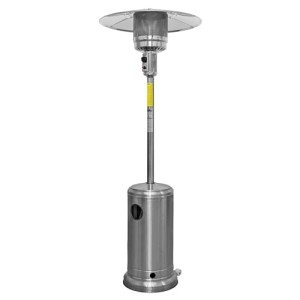The Comprehensive Guide to Gas Patio Heaters
As outdoor living ends up being increasingly popular, gas patio heaters have actually emerged as a necessary aspect for extending the outdoor entertaining season. Whether for a cozy night with friends or a vibrant household event, these heaters offer warmth and convenience that can transform any outdoor space. This short article explores the different elements of gas patio heaters, including their types, advantages, functional mechanics, upkeep tips, and factors to consider for purchasing one.
What is a Gas Patio Heater?
A gas patio heater is a type of heating home appliance created specifically for outdoor usage. Typically fueled by propane or gas, these heaters produce warmth to fight the chill of the night air, permitting outdoor social activities to continue even under cooler temperature levels.
Types of Gas Patio Heaters
Gas patio heaters come in numerous different styles, each matched for various requirements and visual appeals. The common types include:
Freestanding Heaters:
- These are the most typical type and are usually tall, with a large base and a heater component at the top.
- They can quickly be walked around and are ideal for numerous outdoor settings.
Tabletop Heaters:
- Smaller and more compact, tabletop heaters are designed to sit on tables or other surface areas.
- They supply heat for smaller sized locations and are typically easier to store.
Wall-Mounted Heaters:
- These are fixed to a wall and are a great option for outdoor patios with limited space.
- They offer a more irreversible heating service and can match outdoor decoration.
Patio Fire Pits:
- While not exclusively heaters, gas fire pits supply warmth and ambiance simultaneously.
- They can act as a centerpiece for outdoor events.
| Heater Type | Description | Best For |
|---|---|---|
| Freestanding | Tall, mobile systems with a heating element on the top | Big open locations |
| Tabletop | Compact models perfect for table surface areas | Little gatherings |
| Wall-Mounted | Fixed units offering constant heat | Smaller outdoor patios |
| Patio Fire Pits | Combined heating and decorative function | Ambiance and heat |
Benefits of Gas Patio Heaters
Purchasing a gas patio heater offers numerous benefits:
- Extended Outdoor Enjoyment: Gas heaters enable house owners to enjoy their patios even during colder months.
- Quick Heating Capability: Gas heaters warm up rapidly, supplying immediate remedy for the chill.
- User-Friendly Operation: Most gas heaters feature simple ignition controls for ease of use.
- Visual Appeal: Many gas heaters are developed to be visually enticing, boosting the total look of your outdoor space.
- Versatile Fuel Options: Availability of both propane and gas designs accommodates various requirements and choices.
Functional Mechanics
Gas patio heaters run by transforming fuel into convected heat. Here's a simplified breakdown of how they work:
- Fuel Source: Most gas heaters utilize propane or gas. The kind of fuel impacts performance and availability.
- Ignition System: Most models come with either a manual ignition (using a lighter or match) or an electronic ignition (push-button).
- Heating Element: Once fired up, gas flows through a burner, where it is combusted to produce heat. Radiant heat spreads from the heating component.
- Heat Diffuser: Some heaters have a reflector to help distribute heat more evenly throughout a wider location.
Fuel Comparison
| Fuel Type | Pros | Cons |
|---|---|---|
| Propane | Portable, commonly offered | Requires tank replacement/refill |
| Natural Gas | Cost-efficient if linked to a supply | Installation more complicated |
Maintenance Tips for Gas Patio Heaters
Proper care will extend the life of gas patio heaters. Here are some essential upkeep tips:
- Regular Cleaning: Keep the heater tidy from dirt and debris. Frequently clean down the surface areas.
- Inspect Gas Supply Lines: Check for leakages or fractures in the gas lines. Use soapy water to discover leakages by observing bubbles.
- Seasonal Checks: Before making use of a heater, check all elements and repair work or change any damaged parts.
- Storage: During off-seasons, store the heater in a dry place or cover it for protection.
- Expert Servicing: Consider a professional check-up every year, specifically for natural gas models.
Factors to consider When Purchasing a Gas Patio Heater
When picking a gas patio heater, keep the following elements in mind:
- Heating Capacity:
- Measured in BTUs, a higher BTU ranking supplies more heat.
- Size and Weight:
- Depending on the space readily available and whether the heater requires to be portable.
- Product:
- Stainless steel heaters offer sturdiness and resistance to rust and rust.
- Design:
- Choose a style that matches your outdoor design.
- Safety Features:
- Look for automated shut-off functions or security tilt valves to avoid accidents.
FAQs
Q: Are gas patio heaters safe to use?A: Yes
, when utilized according to the manufacturer's instructions and safety standards, gas patio heaters are safe. Always ensure proper ventilation.
Q: How long can one propane tank last?A: A basic 20 lb
propane tank can last anywhere from 8 to 30 hours, depending on the heat setting. Q: Can gas patio heaters be utilized indoors?A: No,
gas patio heaters are designed for outdoor usage only due to the danger of carbon monoxide gas accumulation in enclosed areas. Q: Do gas patio heaters require assembly?A: Most freestanding models require fundamental assembly
, while tabletop and wall-mounted options may require more
specific assembly. Gas patio heaters are an attractive option for those looking to boost their outdoor experiences throughout the year.
By comprehending the different types, benefits, and functional mechanics, potential buyers can make educated decisions that align with their needs. Proper upkeep and safety considerations will ensure that these heaters stay efficient and safe, supplying comfort to outdoor gatherings for lots of seasons to come. With try these guys out and care, a gas patio heater can end up being a cherished addition to any outdoor home.

